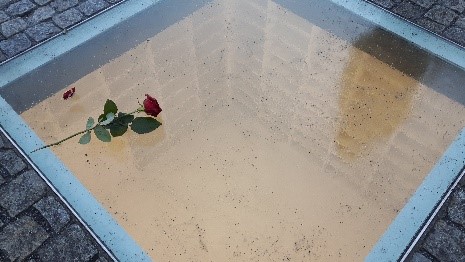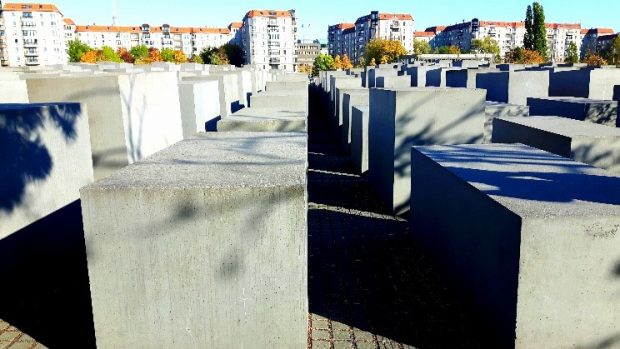My name is Noga Yarmar and I’m a second-year grad student in the Holocaust Study Stream. This past fall (2018) I was fortunate to be the first student in our Germanic and Slavic Studies Department to participate in an international student exchange at the Center for Research on Antisemitism (ZFA Zentrum für Antisemitismusforschung) at the Technical University (TU) of Berlin. For a student of the Holocaust who has never been to Germany, this opportunity to live and study in Berlin was a highly rewarding and valuable experience on an academic and a personal level.
STREET SCENES BERLIN
 The duration of the winter semester at TU Berlin is from mid October to mid February. However, my exchange ended in late December. The Center for Research on Antisemitism offered four courses in English with topics ranging from Antisemitism in the US to the study of Multiculturalism and its critics.
The duration of the winter semester at TU Berlin is from mid October to mid February. However, my exchange ended in late December. The Center for Research on Antisemitism offered four courses in English with topics ranging from Antisemitism in the US to the study of Multiculturalism and its critics.
The course that interested me the most was called “Learning from the Past? Holocaust/NS (National Socialist) Memorial Sites in Berlin”. This course involved excursions to memorial sites in and outside Berlin. I was lucky as the fall weather was relatively mild and dry and I did a lot of exploring and walking on my own as well.With over 3.5 million inhabitants, Berlin is an exciting, vibrant and fascinating city, but there is no escaping the past; everywhere you go you encounter a mark, a sign, a reminder of its dark history. So, an integral part of this exchange was the experiential learning that happened by being in the place and experiencing first hand the memorial landscape and the politics of memory.
SUNKEN LIBRARY at BOOK BURNING MEMORIAL located at Bebelplatz, the square where on May 10, 1933 members of the Nazi German Student Union and their professors burnt books as part of a nationwide action “against the un-German spirit”.
Reflections at the HOLOCAUST MEMORIAL TO THE MURDERED JEWS OF EUROPE.
A few of the questions I explored during my stay were:
* How do we remember and what function this memory evokes and fulfills?
* Who is the memorial for – the viewers or the victims?
* How to tell the story of past atrocities? How to find and achieve a balance between presenting evidence without overwhelming the viewer with information and visual overload?
Reflecting on my exchange, what do I take with me from my time in Berlin and the numerous memorials I visited? How do they inform me in my future studies of the Holocaust? I have learned so much by living and studying in this city and now I have a greater and deeper understanding of the issues and context surrounding the Holocaust, Berlin and German society.
I’m most grateful for this experience and would highly recommend the exchange program for any student who is interested in the Holocaust and in the varied ways it is remembered and commemorated in Berlin. As I bid farewell to this city, I realize there is so much more for me to learn and discover. I hope to come back and do just that in the future!


